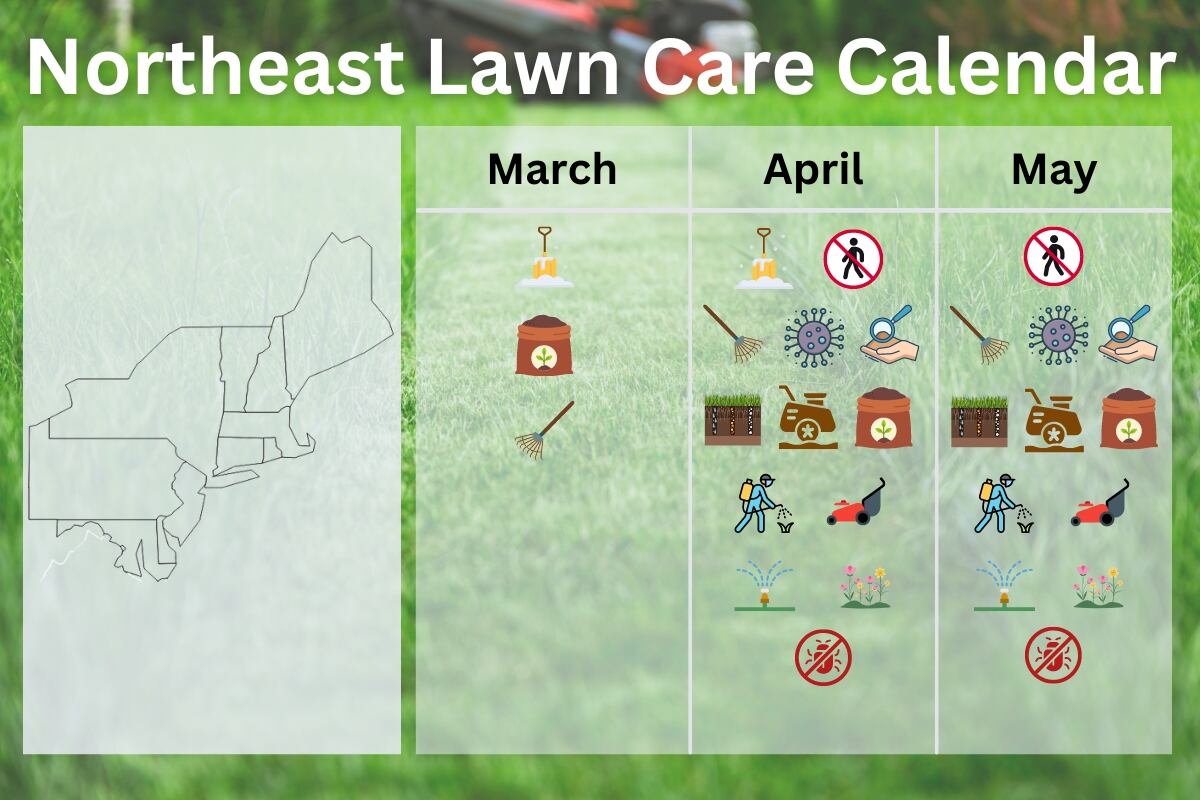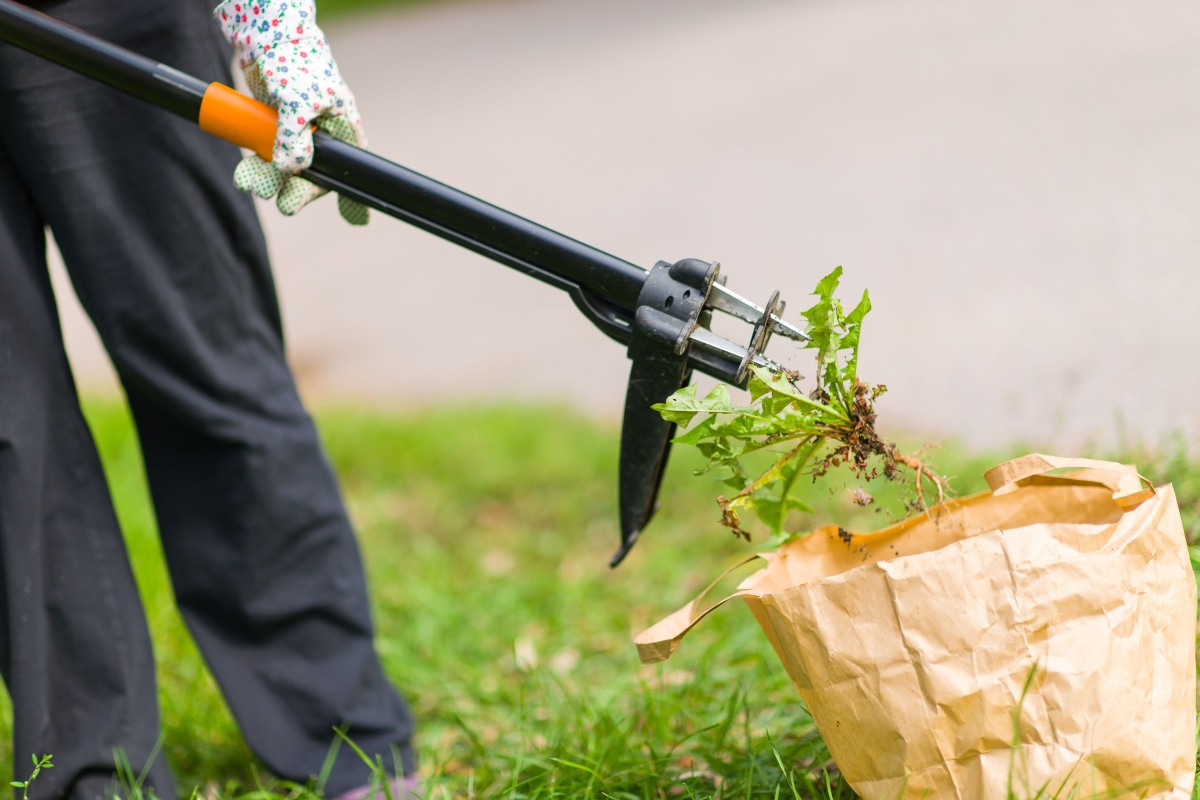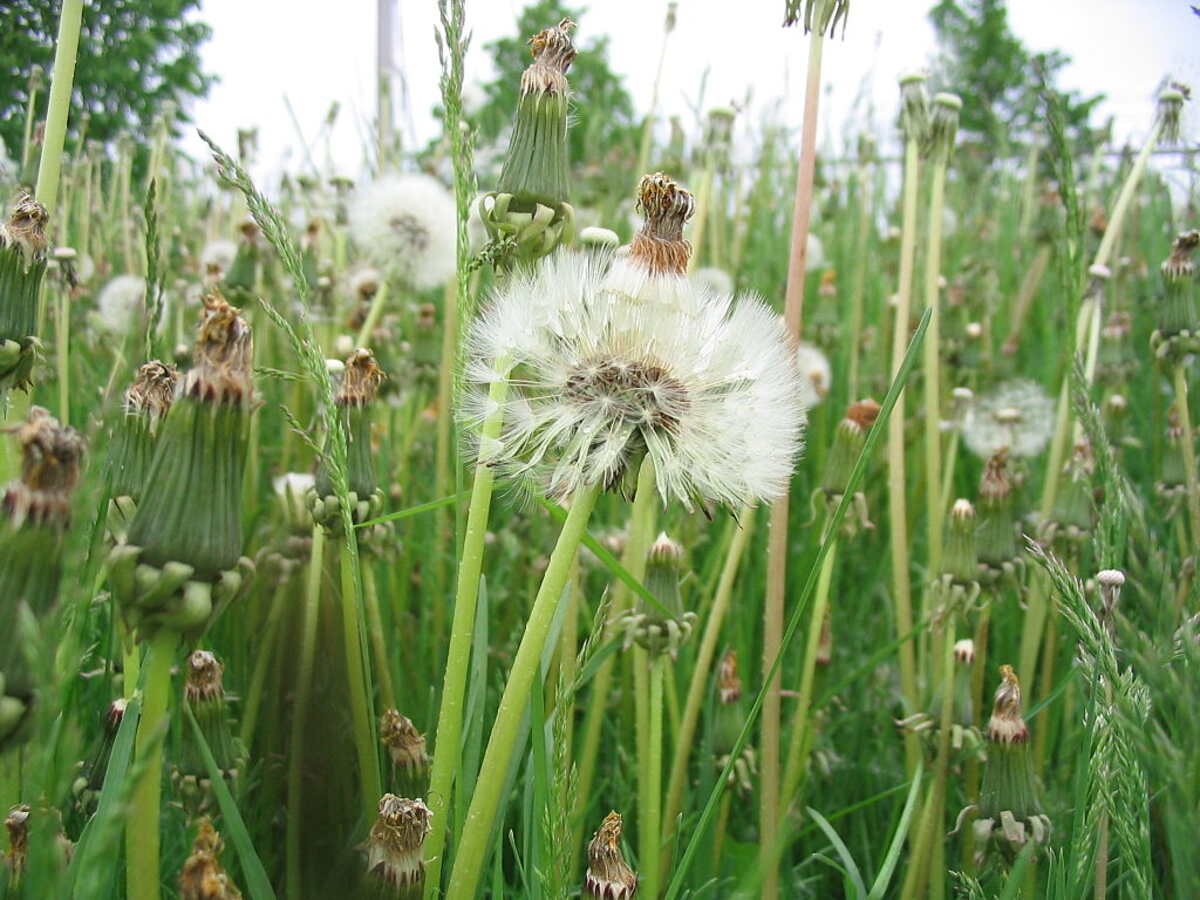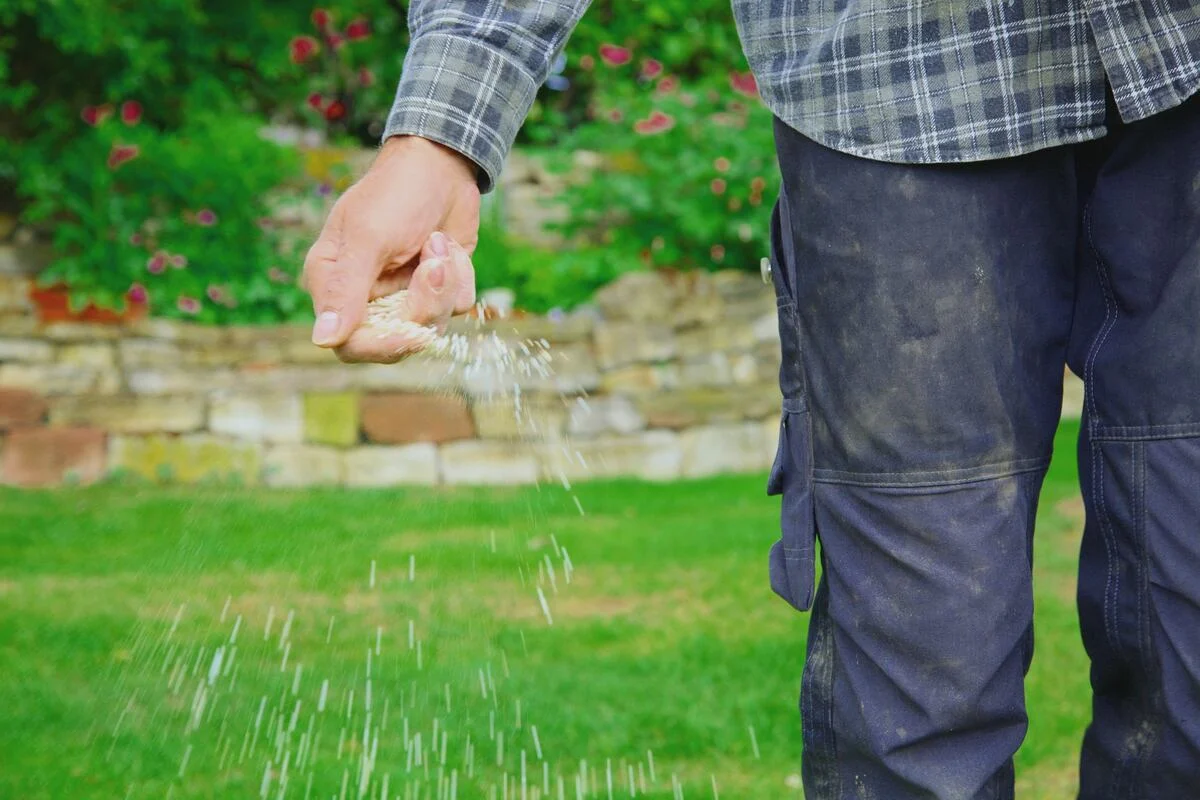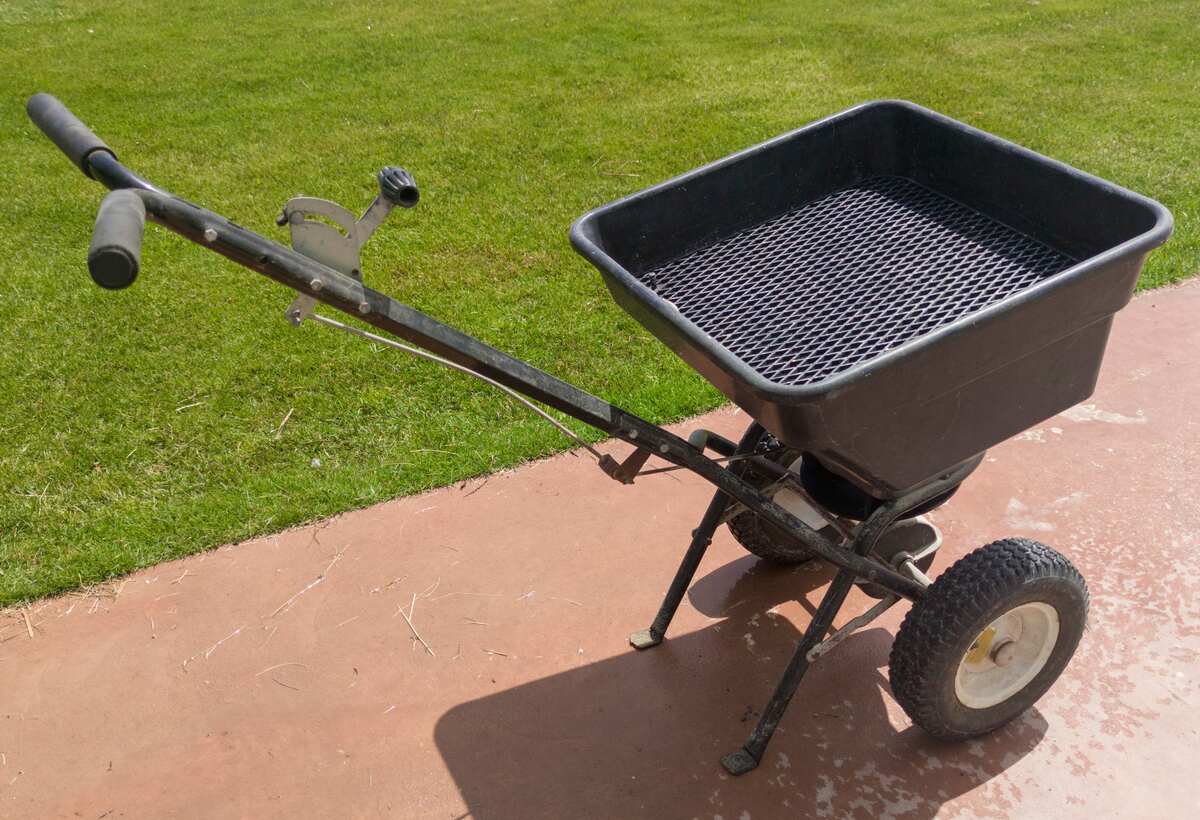
The best time to apply pre-emergent herbicides is when the soil temperature reaches 50-55 degrees Fahrenheit in the spring and falls to 70 degrees in the fall.
To help you get the timing just right, we’ve consulted Dr. Rebecca Grubbs-Bowling, former assistant professor and turfgrass specialist at Texas A&M University, for expert advice and tips.
What is a Pre-Emergent Herbicide?
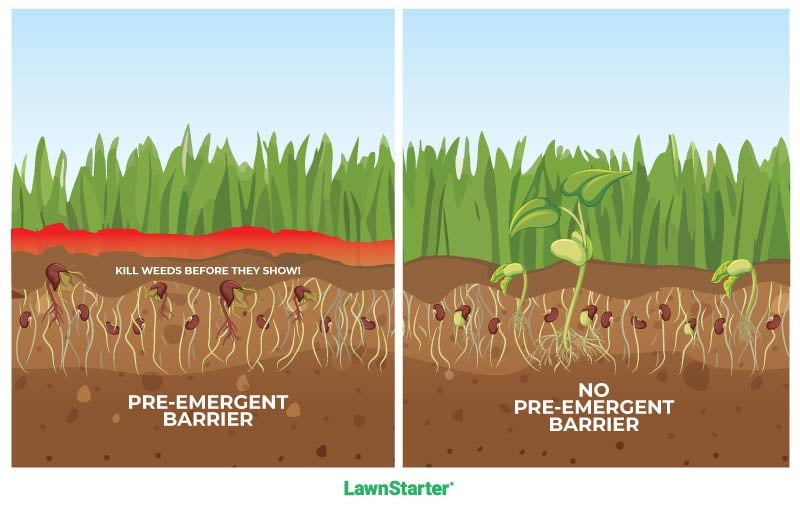
A pre-emergent herbicide is a weed control product that is applied before weeds grow aboveground to keep them from becoming problematic in your lawn. These herbicides prevent a weed’s roots, shoots, or both from establishing.
See Related:
Know What Kind of Weeds you Have
Identifying your weeds is crucial to choosing the appropriate herbicide and application timing. Dr. Grubbs-Bowling says pre-emergent weed preventers are best suited for grassy weeds and annual weeds that reproduce by seeds. “They don’t work as well on perennials.”
Generally speaking, annual weeds are either winter or summer annuals. That means applying the product in spring for summer annuals and in fall for winter annuals.
If you already see weeds in your grass, check out our article on Applying Post-Emergent Herbicides to Your Lawn.
Spring Pre-Emergent Application: When the Soil Warms
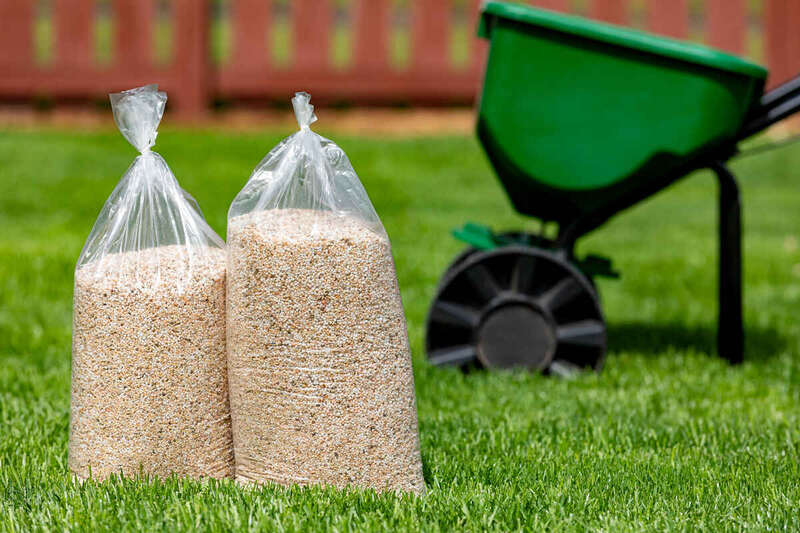
This temperature range is critical for the herbicide to prevent summer annual weed seeds from establishing. Many dormant seeds start germinating once soil temperatures hit 55 degrees Fahrenheit.
For spring application of pre-emergents, “[T]he soil temperature (not air temperature) should be in the 50-55 degree range,” says Grubbs-Bowling, author of “A Homeowner’s Guide to Herbicide Selection for Warm-Season Turfgrass Lawns.”
Here are ways you can measure the soil temperature in your area:
- Find localized soil temperature readings from an online soil temperature map, a local weather station, or your county’s Extension service.
- Plunge a temperature gauge into the soil beneath your turf for the most localized data. You can find inexpensive soil temperature gauges online or at garden shops, or you can use a 3-inch meat thermometer.
To prevent summer annual weeds from popping up all over your yard, apply pre-emergent herbicide in the early spring months. The best time will depend on your location and when the weather starts warming up in your area after winter.
But to give you an idea of the general timing windows, here are the recommended dates for applying pre-emergents in three states, from South to North:
- In South Florida, apply a pre-emergent in early February.
- In central Missouri, apply a pre-emergent from Mid-March to Mid-April.
- In Wisconsin, apply a pre-emergent in April.
Broadleaf and grassy weeds are the most common types of weeds you will see growing during the spring and summertime. Some common spring-germinating weeds include:
- Crabgrass (Digitaria sanguinalis): A grassy weed that grows close to the ground and spreads rapidly. Check here to find out How to Get Rid of Crabgrass.
- Dandelions (Taraxacum officinale): Weeds with broad leaves and yellow flowers that transform into white puffy balls when they mature. Dandelions can benefit your yard and attract pollinators.
- Ragweed (Ambrosia artemisiifolia): A plant that blooms in the summer and produces a large amount of pollen.
- Yellow foxtail (Setaria glauca): A summer annual with a seed head that resembles a bushy spike, similar to a fox’s tail.
- Sandbur (Cenchrus longispinus): A spreading summer annual weed commonly found in dense patches, particularly in sandy soils.
Pro Tip: If your yard has suffered from weeds in the past, prevent them by “reading” what they’re saying about your soil. Correcting soil imbalances is a chemical-free way to help prevent and control the spread of nuisance weeds. Check out our article to learn more: Read Your Weeds: Identify Them to Learn About Your Lawn’s Health.
Fall Pre-Emergent Application: When the Soil Cools
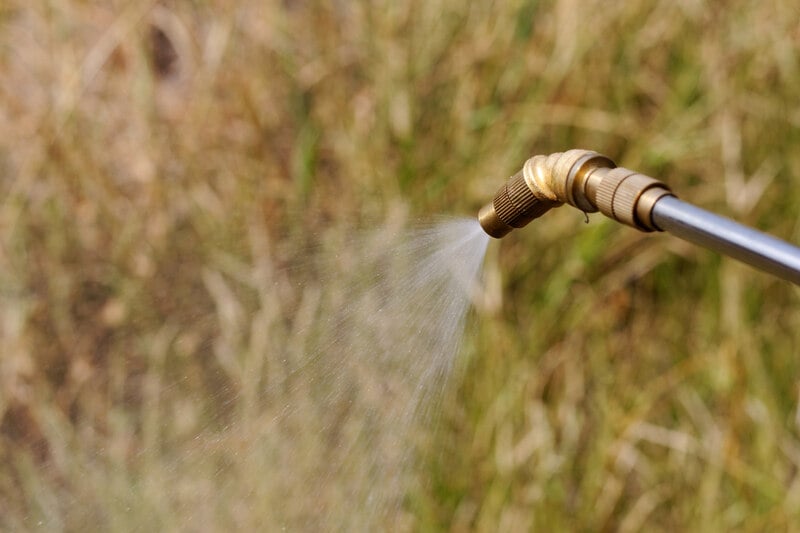
Winter annuals usually germinate in the fall, overwinter as small plants, and then proliferate as temperatures warm up in the spring.
To prevent these weeds from establishing, it is recommended to apply a second application of pre-emergence herbicide in either late summer or early fall.
Ideally, fall pre-emergent herbicides should be applied when the soil temperature is 70 degrees Fahrenheit.
- In Central Florida, apply a pre-emergent from mid-October to mid-November.
- In central Missouri, apply a pre-emergent herbicide in September.
- In Wisconsin, apply a pre-emergent herbicide in September.
Some examples of winter-germinating weeds with a delayed growing season in spring include:
- Chickweed (Stellaria media): A winter annual that grows in moist, cool, shaded areas. It has a shallow, fibrous root.
- Henbit deadnettle (Lamium amplexicaule): This winter annual is identifiable by purple tubular flowers and scalloped leaves.
- Persian speedwell (Veronica persica): The stems of this winter annual are slender, turning upward at the tips as it grows.
- Annual bluegrass (Poa annua): The boat-shaped leaf tips and pale green leaves in spring help identify this weed.
- Cheatgrass (Bromus tectorum): A winter annual with a delicate, feathery appearance. Cheatgrass has slender, light-green stems that sag at the tips where the seeds form.
See Related: What is Cheatgrass?
Spring and Fall Applications

There’s an exception to every rule. Depending on the species, some weeds like clover and spurge can be summer or winter annuals, biennial, or perennial. Because of this, you should apply in both spring and fall to control them.
- Clover (Trifolium repens): Many people have worked hard for a long time to keep clover out of their lawns, but you should reconsider eliminating it. Clover lawns have gained popularity, as they are nitrogen-rich and pollinator-friendly.
- Spurge (Euphorbia spp.): This broadleaf weed family can be easily identified by its red hairy stem and dense mat of dark green leaves close to the ground.
See Related: Reasons to Plant a Clover Lawn
Granular vs. Liquid Pre-Emergent Herbicides
One thing to keep in mind is that application time frames vary a little depending on whether you are using liquid or granular pre-emergent herbicides.
- Liquid pre-emergents work faster than granular herbicides. These weed-killer sprays are also easier to spread evenly around your yard.
- Granular pre-emergents are more slow-acting than liquid pre-emergents. Additionally, they are more difficult to spread evenly around your yard. Typically, you distribute them around your property with a drop spreader.
When you have finished treating your lawn with a pre-emergent, Grubbs-Bowling recommends storing pre-emergent herbicides in a place that is not accessible to children or pets.
See Related:
FAQ About When to Apply Pre-Emergent Herbicides
When Can I Mow After Applying Pre-Emergent?
Wait a day or two after a pre-emergent treatment before you mow your yard.
When Should I Water After Applying Pre-Emergent Herbicide?
You should water immediately after you apply a granular pre-emergent herbicide. For liquid pre-emergent herbicides, wait 12 to 24 hours before you water your lawn.
When Can I Apply Pre-Emergents to New Grass?
You should not apply pre-emergents to new grass. According to the University of Georgia, you should only apply pre-emergent herbicides on grass that is at least 1 year old. Otherwise, it could damage your new lawn.
Don’t Get Stuck in the Weeds
Whether you’re approaching the spring or fall season this year, you want to stay on top of lawn weed control. It’s less of a headache for you if you can stop weeds before they even have a chance to grow.
Applying pre-emergents yourself is a job that isn’t for everybody, so if you feel daunted with timing the herbicide application just right, hire a lawn treatment pro in your area to apply lawn weed killer to your yard instead.
Main Image Credit: WH_Pics / Adobe Stock
